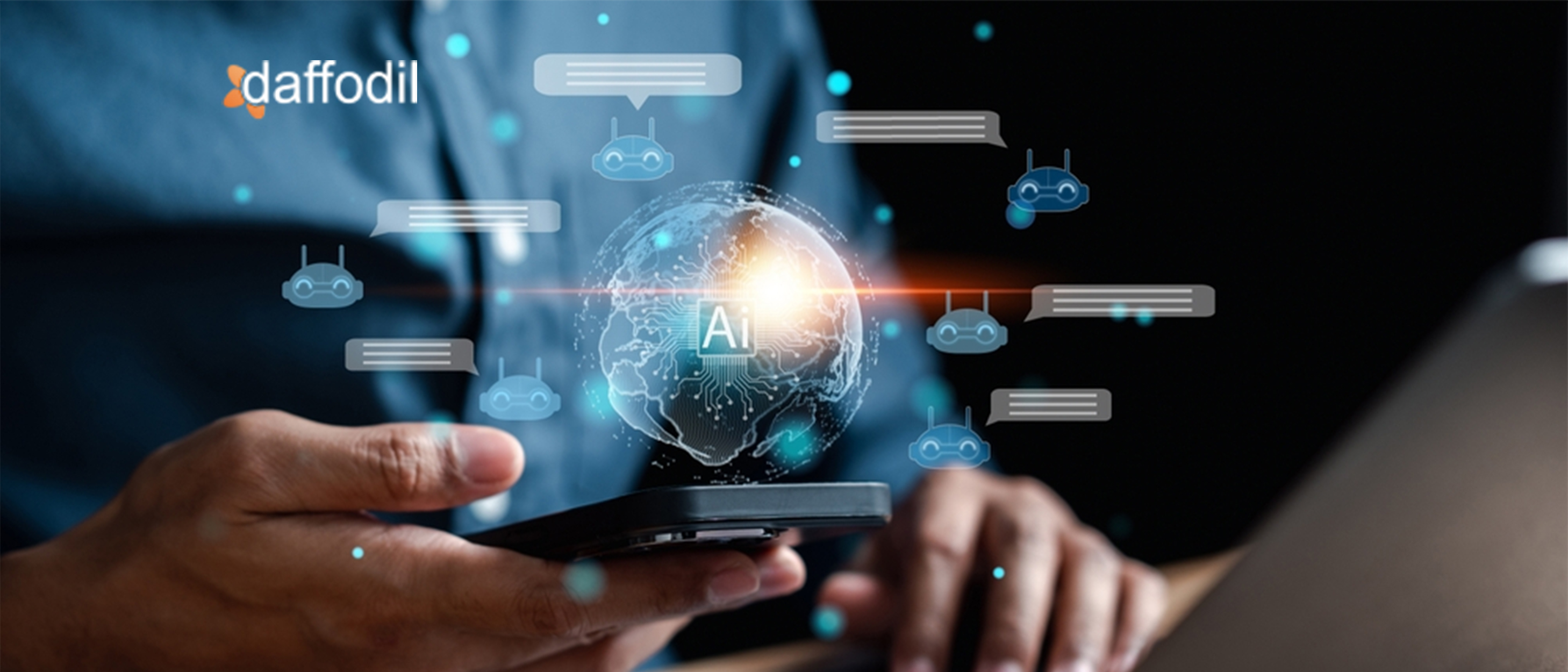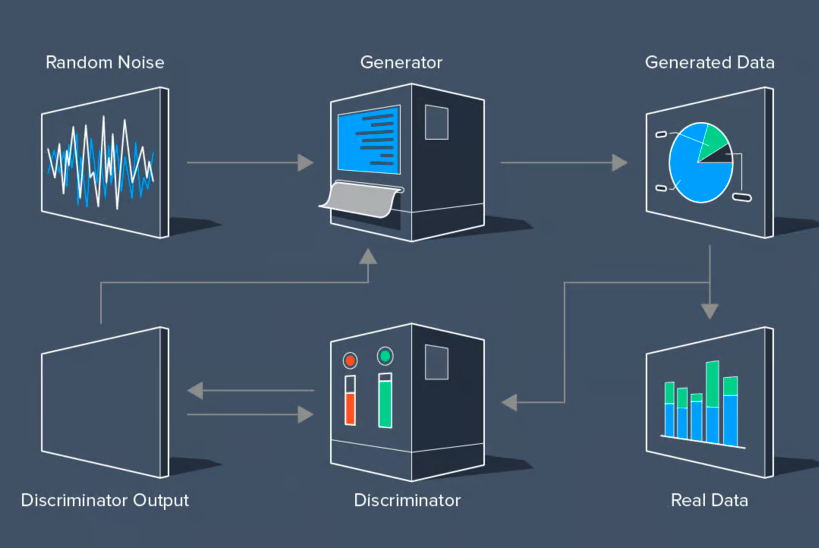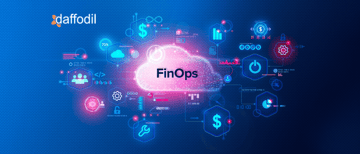
Artificial Intelligence (AI) solutions that generate increasingly original content in the form of images, videos, and text have evolved into mainstream technologies today. The underlying innovation that has made this possible is Generative AI, a cutting-edge technology forcing several industries to rethink the way they function while easing workflows for others.
One highly impactful advantage of Generative AI is the acceleration of the leveraging of high volumes of unlabeled data which tends to be a perennial problem for enterprises. The generation of long meaningful essays and photorealistic images takes no longer than seconds thanks to this technology.
In this article, we will explore everything there is to know about generative AI and the extent of its impact across several industries.
What is Generative AI?
Generative AI is fundamentally a collection of algorithms that can be applied for the generation of new content irrespective of form, format, and data type. It sees a wide variety of applications from generating original content in the form of essays, photorealistic images, and videos to simulations that prepare professionals for critical real-world situations.
These AI models produce original content based on the input data that they are trained on. So these models must be trained on a large volume of data to be able to predict along the lines of that data so as to generate brand new data along those lines.
How Intelligent Systems are Developed Using Generative AI
Generative AI helps develop intelligent systems by producing original, unique, and innovative outputs across media types and formats. These outputs can be used in a variety of applications, such as image and language generation, drug discovery, and game development.
Intelligent systems help find solutions and expedite processes across industries as they are capable of some of the following activities:
- They function in ecosystems with several other systems and applications, helping eliminate data siloes and enabling seamless communication and cross-collaboration.
- Utilizing capabilities such as action control, independent deliberation, and technologies such as Natural Language Processing (NLP), intelligent systems function as cognitive assistants to users and respective stakeholders.
- They can be programmed to function in accordance with social and cultural norms and can exercise razor-sharp rationality to solve customer issues in a personalized manner.
- Through the various activities that they simplify, they keep learning and developing innovative ways to solve even the most unique problems.
Machine learning algorithms are leveraged to generate new data that can consequently be used to train intelligent systems specific to a particular use case or industry. The application of generative AI in intelligent systems helps provide new insights into complex problems.
With the ability to automate the creation of new data and models, generative AI can help accelerate the development of intelligent systems and enable more sophisticated and personalized applications. Let's get into the details of how this is made possible:
1)Data Augmentation
Data augmentation is enabled by generative AI by creating synthetic data similar to real data using algorithms. The size and versatility of training data can be expanded which makes the intelligent system that you build reliable, robust, and more accurate. Generative AI applies Generative Adversarial Networks (GAN) which consist of a network element known as a generator creating new data from the training data set, while a discriminator distinguished synthetic data from real data.
2)Labeled Data Generation
Using underlying technologies such as GANs and Variational Autoencoder (VAE), generative AI can produce synthetic labeled data that can be leveraged when there is a shortage of real-world data to train an AI model on. Random noise is fed to the algorithms to generate new data points which can then be modified or adjusted to arrange themselves into desired patterns or distribution. Unlike real-world data, synthetic data can be altered at will to fit a particular range of values or characteristics leading to better-trained intelligent systems.

3)Anomaly Detection
Anomalies are detected by generative AI trying to reconstruct a data point that is fed to it. If what the underlying algorithms reproduce is significantly different from the original data point, it is marked as an anomaly. Additionally, the distribution of the synthetic data points can also be measured to detect alterations in the data points and flag anomalies accordingly. Detecting cyber threats from online traffic and finding abnormalities in radiology reports are some examples where intelligent systems utilize generative AI.
4)Personalization
The manner in which generative AI helps in personalizing intelligent systems can be demonstrated with the example of its application in e-commerce. The AI can learn the buyer's behavior and purchasing patterns to then recommend the best possible products for the user based on their activity on an e-commerce application making it an intelligent system.
How Generative AI Enables Industry-Specific Intelligent Systems
Generative AI can produce synthetic data for training machine learning models, develop personalized experiences for customers, create realistic virtual environments, and optimize various components. By enabling intelligent systems to learn and adapt to new data sets, generative AI has the potential to revolutionize industries and improve efficiency, reduce costs, and enhance customer experiences. These are examples of how different industries find benefits through generative AI in their intelligent systems:
1)Google's Magenta in Art and Entertainment
Google leverages generative AI to develop new tools that help artists and musicians to produce new forms of artistic expression. The underlying AI models learn the patterns and structures in the data, in the form of art and music fed to it, and then create new content similar in style and form to the original data. Two tools developed using Magenta are NSynth which generates new music and SketchRNN which creates drawings.

2)Spelunky in the Videogame Industry
This AI tool generates new levels in games for players to explore based on escalating levels of difficulty, expanding resources, and environment types. The underlying intelligent systems also learn from player behavior to model the levels to provide players with challenges that best fit their level of expertise and engagement. Infinite replayability and a unique experience for each player are developed.
3)Stanford University's TCAGAN in HealthTech
Researchers at Stanford University developed a generative AI model called Tissue-Consistent Adversarial Generation of Medical Images using Cross-Modality Synthesis (TCAGAN) to create realistic medical images. These images, although synthetic, tend to be consistent with the tissue characteristics of the target modality. The generator of this model is trained on a combination of medical images from multiple modalities from MRI and CT scans. These have enabled several breakthroughs in medical imaging and have helped healthcare research bodies gain highly beneficial insights from diagnostic analytics.

4)JP Morgan's LOXM in FinTech
The Limit Order Execution Machine (LOXM) was developed by JP Morgan and Chase to help investors make more informed decisions about when to buy or sell stocks. A large amount of financial data from companies' financial reports, press releases, and stock market data aggregators is analyzed by LOXM to predict how certain events and market movements could potentially affect a particular publicly traded company's overall performance. This generative AI model can help traders by simulating a variety of force majeure scenarios that cannot be predicted by traditional statistical models. Traders are then equipped with all the necessary investment knowledge to gain far better returns on their investments.
5)Airbus' PHAG in the Aerospace Industry
Using generative AI, Airbus developed a design tool known as Parametric High-Speed Generation (PHAG) to optimize the airplane parts manufacturing process. Within seconds, the generative AI model looks through thousands of design possibilities, evaluating them in detail to come up with the most viable options. Weight, size, the strength of material, and aerodynamic performance are evaluated to provide design concepts that can achieve the desired results in the final design of the aircraft in terms of ideal structural integrity, ability to support passenger loads, etc.
ALSO READ: The Emergence of Artificial General Intelligence: A Breakthrough in Intelligent Systems
Generative AI Can Elevate the Performance of Intelligent Systems
If intelligent systems can integrate the capabilities of generative AI solutions, they can learn and adapt to the training data more quickly. This can then allow the generation of higher volumes of synthetic data to gain deeper insights that lead to well-informed and holistic decision-making across several industry-specific use cases. If you are looking for similar bleeding-edge AI enablements for your digital solutions, you can book a free consultation with Daffodil Software's AI development team today.




